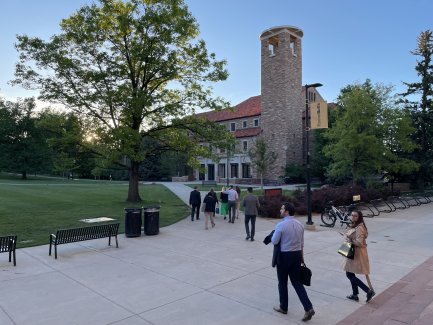Artikkelit

01.10.2025
USA: The US invests heavily in education, but gaps remain
The United States spends significantly more on education than most OECD countries. About half of young adults attain a higher education degree, and the investment continues to yield substantial economic benefits. However, participation in early childhood education is low, educational costs burden families, and teacher salaries lag behind those of other highly educated professionals.
Strong foundation, but blind spots in the system
Most American children and youth receive free public education before college. Fewer than ten percent attend private schools during primary and secondary education, indicating the broad coverage of the public education system. The U.S. also stands out positively in the number of higher education graduates: about half of 25–34-year-olds have completed at least a bachelor's degree, compared to the OECD average of 45 percent.
On the flip side, the U.S. lacks a vocational education pathway comparable to those in Nordic or many Central European countries. About 90 percent of American youth complete high school, which primarily prepares students for college, whereas in Finland, for example, nearly 40 percent of students choose vocational education after basic school.
The U.S. also lacks a unified system of universities of applied sciences and widespread use of apprenticeships, which are common in many European countries. The country’s large service sector draws young workers directly from high school, but in high-tech industries, the shortage of vocationally trained labor is a major and recognized issue.
Early childhood education also lags behind many peer countries. Only about 65 percent of 3–5-year-olds attend preschool, compared to the OECD average of 85 percent. Participation among children under 3 is especially low, often due to the high cost of early childhood education, which frequently keeps one parent at home during the early years.
Education is expensive—but still worth it
Higher education in the U.S. is the most expensive among OECD countries. For U.S. citizens, studying at a public university in their home state (in-state tuition) is significantly cheaper than attending a prestigious private university as an international student (out-of-state or international tuition).
According to the OECD report, annual tuition fees for bachelor’s programs at public universities average around $9,600, while private institutions charge over $34,000. At the most sought-after private universities, the sticker price—including housing and meals—can reach $60,000–$90,000 per year. About 82 percent of students receive some form of financial aid—grants, scholarships, or government-backed loans.
Despite the high costs, investing in higher education still pays off according to OECD statistics. In the U.S., the lifetime net benefits of a college degree exceed $700,000 for men and $500,000 for women—roughly double the OECD average. Income levels are also significantly higher: 25–34-year-olds with a college degree earn on average 57 percent more than their peers without one.
Despite substantial investments, the system does not yield equally good outcomes for everyone. Gender disparities persist: in 2023, for the first time, women made up 54 percent of first-time college applicants, yet men still dominate STEM fields. Family background plays a major role: nearly 70 percent of young adults with college-educated parents attend higher education themselves, while only about 20 percent of those whose parents lack a high school diploma achieve a college degree. Among low-income groups, college enrollment has declined in recent years, driven by rising costs and strong demand for low-skilled labor.
Teachers in the U.S. face more challenges than their European counterparts. Their salaries fall significantly behind those of other professionals with similar education levels. For example, primary school teachers earn on average just over half of what other college-educated workers make. The gap—about 37 percent in the U.S.—is only 17 percent on average across OECD countries. Although the U.S. spends large sums on education, it has not succeeded in raising the status and appreciation of teachers to the level that most policymakers agree is necessary.
Petri Koikkalainen, Senior Specialist, Washington DC
Studying at the University of Colorado Boulder costs Colorado residents approximately $15,000–$20,000 per academic year, and $44,000–$51,000 for students from other states and abroad. Housing, meals, and books add about $20,000 to the annual expenses. Photo by Petri Koikkalainen.
